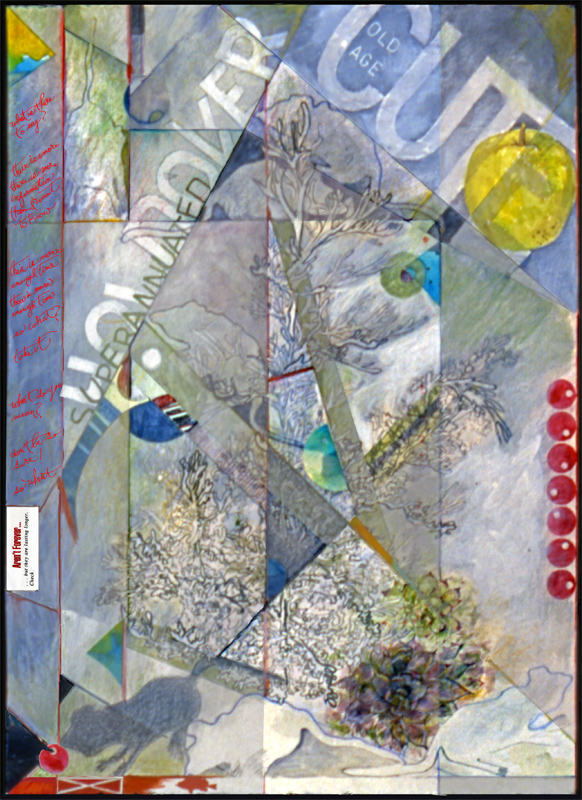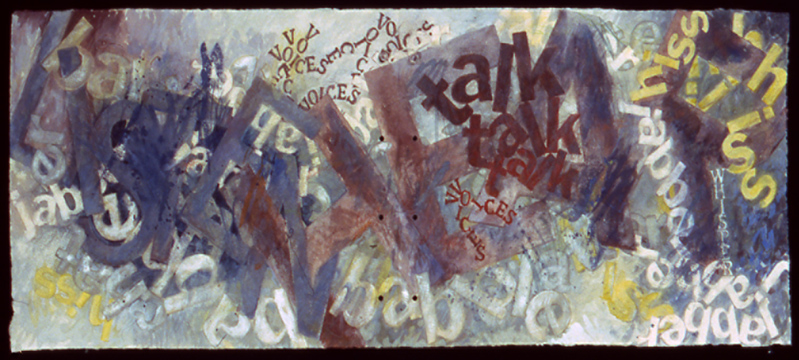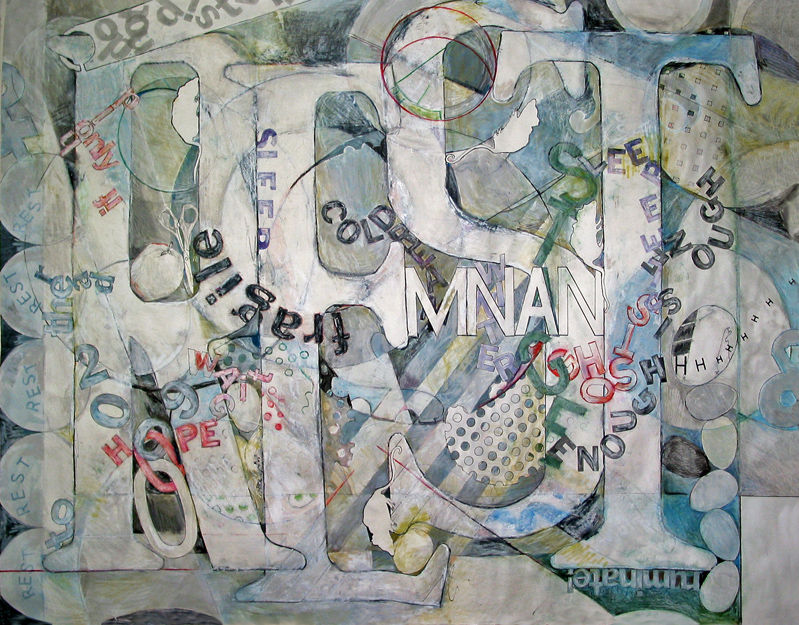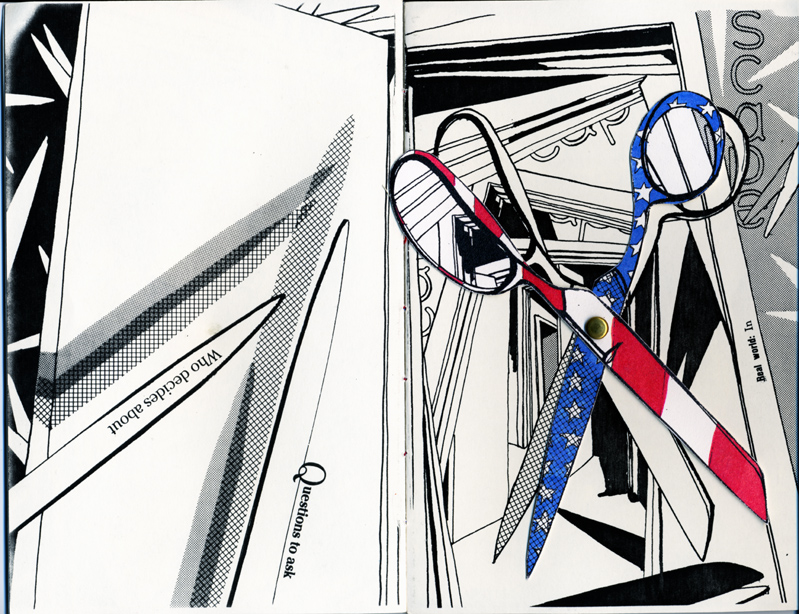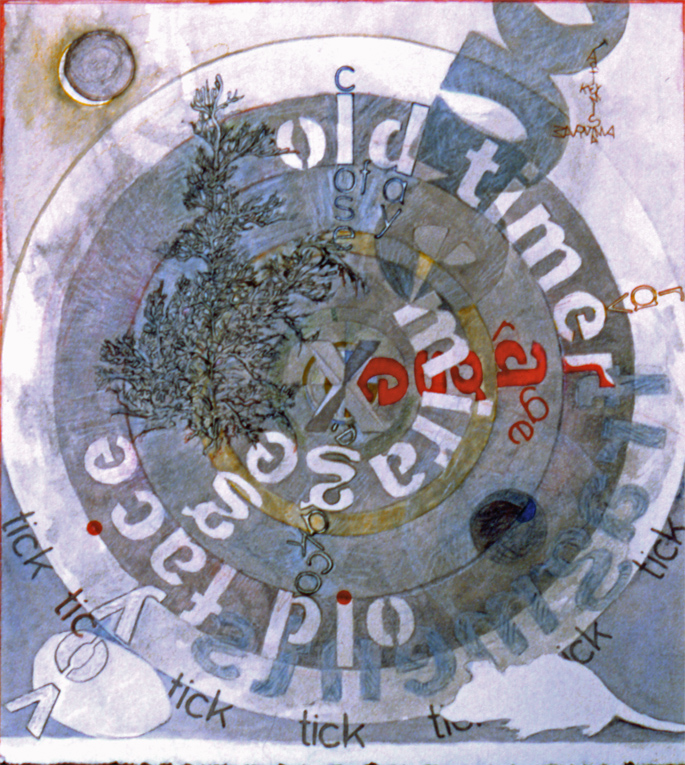 Sheila Heti: Photo by Lee Towndrow
Sheila Heti: Photo by Lee Towndrow
Sheila Heti is a Toronto writer whose 2012 novel How Should a Person Be? created a trans-Atlantic sensation. It was a 2012 New York Times Notable Book of the Year and it has just made the long list for the prestigious The Women’s Prize for Fiction (formerly the Orange Prize) in the UK. David Haglund in The New York Times Book Review wrote: “Funny…odd, original, and nearly unclassifiable…Sheila Heti does know something about how many of us, right now, experience the world, and she has gotten that knowledge down on paper, in a form unlike any other novel I can think of.” The Economist‘s reviewer said: “Ms. Heti’s deadpan, naked voice is what makes Sheila’s journey so engaging… [Her] mordant take on modernity encourages introspection. It is easy to see why a book on the anxiety of celebrity has turned the author into one herself.” And in The New Yorker, no less a critic than James Wood opined: “[Sheila Heti] has an appealing restlessness, a curiosity about new forms, and an attractive freedom from pretentiousness or cant…How Should a Person Be? offers a vital and funny picture of the excitements and longueurs of trying to be a young creator in a free, late-capitalist Western City…This talented writer may well have identified a central dialectic of twenty-first-century postmodern being.”
It’s a delight to publish here what might be the definitive Sheila Heti interview, a lengthy, intimate, wide-ranging conversation with Jill Margo as interlocutor. Margo probes and nudges most gracefully and does not limit the topics to the purely literary. Her interview has the aura of something overheard, and what you overhear are two intelligent women talking about art and the writing life. It’s a treat.
dg
§
I interviewed Sheila Heti at her home in July of 2012 on one of those disgustingly hot and humid Toronto days that—to swipe a phrase from Billie Livingston—felt like “being under a dog’s tongue.” Sheila, as it turned out, lives not far from me on the top floor of a house on a corner lot that I’d walked by several times before. I’d always admired the place because of its gothically romantic and overgrown garden that disappears the tall fence and nearly obscures the house.
When Sheila came to the door, she looked cool (literally) and put together. She was even wearing nice, proper shoes instead of flip flops or bare feet. I’m not sure if I would’ve thought to put shoes on if I was being interviewed in my own home—especially in that heat. I couldn’t decide if it was a gesture of fashion, professionalism, or maybe even a kind of guardedness.
I had met Sheila twice before. The first time was around 2001 when she read from her debut book, a story collection called The Middle Stories, at a reading series I hosted in Victoria, BC. The second time was nearly ten years later, in 2011, when I hosted her reading at the Robson Reading Series in Vancouver. That was the year after her fifth and most recent book, How Should a Person Be? had been released by Anansi in Canada. It was published the following year in the U.S. by Henry Holt & Company and has since been featured on many Best Books of 2012 lists, including in The New Yorker, The New York Times, Salon, Flavorpill, The New Republic, and The New York Observer.
How Should a Person Be? is subtitled “a novel from life” and is described as “part literary novel, part self-help manual, and part bawdy confessional.” It exists in ambiguity between the real and the fictional. Its characters are based on Heti and her friends and, for the most part, appear to have their same names. There are emails and transcribed conversations throughout the book that could be considered real documentation. The book is structurally and thematically compelling and I’ve recommended it to many of my friends and colleagues because it’s well-written and occupies such an interesting space in the zeitgeist.
In the years between the two times I hosted her for readings, Heti has published three other books, including a novel, Ticknor, (2005); and an illustrated book for children, We Need a Horse, (2011), featuring art by Clare Rojas; and with Misha Glouberman, a book of “conversational philosophy” called The Chairs Are Where the People Go, which The New Yorker chose as one of its Best Books of 2011.
Heti also works as Interviews Editor at The Believer and has contributed many interviews with writers and artists to the magazine. It’s also of note that in 2001, she created the ever-popular Trampoline Hall lecture series (hosted by Misha Glouberman), at which three people deliver lectures on subjects outside their areas of expertise, then take questions from the audience.
It was a pleasure to talk to Sheila and to be reminded how a writer should be along the way.
— Jill Margo
§
THE BEGINNING
JM: Let’s start at the beginning. Your first book was The Middle Stories. It was published when you were twenty-four. Tell me a little bit about where you were at when you wrote that book.
SH: I was studying art history and philosophy at U of T and it was around the time I was twenty-one or so. I was trying to teach myself how to write. The last writing I’d done before that was at the National Theatre School where I was studying playwrighting, but that didn’t really end up working out for me. So I started to write stories. I was writing a lot and I was writing very quickly and all I really wanted to do was get to the end of each story. I’d sit down and write five or six in a row. In the actual collection, the stories are pretty much as they were written and were only very lightly edited. Mainly, the editing was me selecting the good ones from the hundreds of stories that were just nothing—that didn’t have any spark in them or anything.
JM: Did you always want to be a writer?
SH: It was one of the things I always wanted to be since I was a kid, and I also wanted to do other things. Like a lot of artistic kids, you just sort of want to do everything— you want to act, and you want to direct plays, and you want to write, and you want to draw. But writing always fit in there.
JM: What about the family you grew up with—did they support your artistic endeavors?
SH: I think my mom didn’t necessarily want this for me, but my dad supported anything I did. He didn’t have preset ideas of what his daughter should be like, or what his daughter should do. He supported me when I wanted to act, he supported me when I wanted to write. He was always very encouraging.
JM: What do you think is the best thing you ever did for yourself as a writer?
SH: Probably moving out when I was seventeen, and supporting myself since then. I think it gives you some confidence and a lack of fear to know that you can support yourself from a young age. I’ve never had to support myself in ways that hurt my ability to write so that gave me confidence that I could perhaps write and support myself over many years.
I think maybe the worst thing I could have done would’ve been to get a well-paying job at a young age that I then got locked into because I got used to a higher standard of living. I think moving out at seventeen and living on so little meant I got used to a low standard of living and I know if I had to, I could always go back to that.
JM: What other kinds of jobs have you had?
SH: I worked as an editor at this magazine called Shift, which doesn’t exist anymore. It was a technology and culture magazine in Toronto. I’ve done temping and I’ve worked in restaurants and just the usual kind of makeshift things.
JM: Do you feel like you’ve had to be quite strategic with your writing career?
SH: No, I’ve had a lot of good luck. I’ve never been afraid of sending my stuff out so that’s allowed for good luck to happen because I haven’t just been on an island. I sent my stories to McSweeney’s, but if I didn’t send them, they never would have published them, so I think that’s paired with good luck. I don’t think I’ve had a strategy; I’ve had a desire to be in the world.
m
PROCESS & PATIENCE
JM: Technically, how do you write—when and where and with what?
SH: I use my computer. I’ve always used a computer. I usually write in this middle room in the place where I live. I always usually just write in whatever apartment I’m living in. I don’t write in cafés or anything like that. I can’t imagine it. I don’t write with music on. I don’t like having people around. That’s pretty typical.
And then I just write whenever I want to. I don’t really have a schedule. I used to worry a lot about that. I used to think that you had to have a schedule but I realized that I don’t need one. I like writing enough and I want to write enough that I do write enough. I don’t have to beat myself with a stick.
Every day is completely different. I feel different every day when I wake up, and what I want to do every day is different. By this point in my life I have so many different projects that I’m working on, like editing interviews for The Believer and various collaborations, that there’s always something I most want to do. I figured that out a few years ago. I used to think that you could only work on one thing at a time but I realized that it’s better to work on lots of different things because that way there’s always something that you’re in the mood to work on.
JM: Was it much of a struggle to just let yourself work organically like that?
SH: It took probably ten years or so for me to accept my way working, and to believe that work was going to get done. But when I was writing The Middle Stories, even then my only discipline was that when I felt like writing I had to write. You can’t miss those times. That was the foundation of discipline for me. I really tried to be sensitive to those moments. Sometimes I’d leave class and go home to write. Now, I don’t just wait for those moments of, let’s say, inspiration, but I still try to always write when I have that feeling. If I don’t—if I have the feeling, but instead watch a movie, or read a book, or go on the Internet or email—then I feel really bad and like I’ve let myself down. It’s like something wanted to be expressed in that moment and I missed it and I’ll never get it back.
JM: Do you know the late poet Ruth Stone? She said that when a poem came barreling across the fields where she was working she had to stop what she was doing and run and catch it. If she had to, she’d grab it by the tail and pull it back towards her. I’ve always loved that image. You’re basically saying the same thing—that you have to capture the moments and trust that the writing is going to get done.
SH: I have to trust that it’s going to get done and that that’s just me and that’s just my process and there’s nothing to really worry about. And if it doesn’t get done, also, who cares? If it doesn’t get done, it doesn’t get done. The world doesn’t need your books. So it seems silly to force yourself to write if there’s nothing to write.
JM: “The world doesn’t need your books” is an interesting statement coming from a writer. Can you talk about that a bit more?
SH: Well, the world isn’t sitting around waiting for your books. The world is taking care of children and making money to pay the rent and eating dinner. If you don’t write your books, pretty much who cares? There are already more than enough good books for any reading person. You do it because you want to, not because the world is begging you.
JM: Earlier, you said that the stories in The Middle Stories weren’t really edited and that the ones without spark were just thrown out. That’s unusual. Can you talk about your editing process—or lack of it—then vs. now?
SH: It’s something I’ve learned to do over the years. I’m not sure what I thought in the beginning. I guess I must have thought that everything I did was perfect. Now I see all the ways the things I’ve written can be better and better, almost to infinity. I don’t think it’s because my standards have changed, but my imagination for what writing can do has expanded. I used to only think about writing in terms of the sentence, but now I think that a piece of writing can be a game that a readers uses to play with the world, a book can be so many things. So all new kinds of calibration are needed.
JM: Do you have any superstitions or rituals around writing or do you take a strictly pragmatic approach?
SH: I don’t have any superstitions or rituals around it. No… no, I can’t think of any.
It’s just work. It’s a certain kind of work, but it still is work. You have to put in a lot of time, but I don’t think superstition comes into it. I don’t think magic comes into it, apart from the magic that comes into it when you work. That’s magic—when things happen that you weren’t trying to make happen, but sort of happen on their own. It’s like, if you work for a number of years on something, then there are just layers to it that give it more meaning than you could give it if you just spent a week or a month on it. I think that’s the most interesting thing about writing—working on something over five or six years. I’ve learned to really love that. I guess Ticknor was my first experience of that. You’d think that you’d get bored, but there are so many different angles on something and there’s a whole world that you’re looking at and so I think the text becomes more intelligent the more time you spend on it.
JM: I think so, too.
SH: I don’t think two years is enough.
JM: I wonder what Joyce Carol Oates would say?
SH: [Laughs.] For me, I think you need five years. That so far seems like the right amount of time to spend on a book. Maybe seven years is even better. That’s one full cycle they say, right?
JM: Do you always feel that patient with the process?
SH: Mm-hmm. Yeah.
JM: So you’re really, truly enjoying the process?
SH: I mean, what’s the rush? You want to make something good.
OTHER PEOPLE’S VOICES
JM: What do you consider your best or favourite piece of writing—and not necessarily a whole book?
SH: I don’t have that, but I really like doing the interviews that I do for The Believer. I like—I love editing them. I think that it’s really fun. I find that the most enjoyable work—I don’t know if it’s the best work, but it’s probably the most enjoyable work that I’m doing these days.
JM: What do you like about it?
SH: I like other people’s voices and I like how other people think and I like how other people express things and I think editing an interview is really fun. I think it’s some suppressed playwrighting urge. I move things around a lot. I change people’s sentences sometimes. I cut things out. I really edit it a lot. I try to edit it in such a way that when I send it back to the person I interviewed they don’t think I’ve done anything to it because it still seems like them and feels like them.
JM: Trampoline Hall, which you started, is also about curated voices and it’s hosted by Misha Glouberman, whose words you transcribed for The Chairs Are Where the People Go. So other people’s voices really are a thing for you. I wonder how much of that has to do with the writer wanting to get out from behind her desk and engage with the world?
SH: That’s part of it. Part of it is just—I know what I think, what I feel. My biggest fantasy is always being inside someone else’s body, their experience of the world. Sure, I can imagine that from behind my desk, but I can also approach it more directly, but actually talking to people.
JM: What writers, past and present, do you feel closest to?
SH: I love Kierkeggard. I love Jane Bowles. I love C.S. Lewis. I guess those are the first ones that come to mind. In the present [scans the bookshelves in the room], I like Helen DeWitt a lot. I love Ben Lerner’s recent book, Leaving the Atocha Station and Sarah Manguso’s memoir about her illness. Leanne Shapton’s work I really like a lot…
A lot of those are people I know, but with the exception of Leanne, who I met through a friend when we were quite a bit younger, I know them because I like their work. I want to know the writers who are alive today whose work I like. I want to talk to them.
JM: You have an amazing multi-disciplinary artistic community yourself. How does your community—having a network—support you as a writer in your life?
SH: It’s everything. I don’t think you can exist professionally—not to mention as a human—apart from the support of other people. I think people put a lot of emphasis on being published, but I don’t think being published is exactly what matters. I do think you need people that think you’re great and that think your work is meaningful. They don’t have to be people that can publish you, but that have to be people who believe in you and can be critical of you.
I’ve always had people to show my work to and I’ve managed to find supporters. I feel like the work doesn’t really exist in the absence of somebody else engaging with it. I think one often shows their work hoping it’s done and hoping that somebody else will say it’s done, but really the deeper hope is that they’ll say it’s not done. It feel like it’s important to hear that things are not done, that things are not ready. With Ticknor, one of the most important things my editor, Martha Sharpe, said to me when I handed in the book was that it wasn’t done. She didn’t even say why. Margaux said the same thing when I showed her How Should a Person Be? I guess athletes have coaches, but for a writer it’s someone who says “it’s not done.” You always know what needs to be done though… no one needs to tell you that.
JM: Do you have the same first readers?
SH: They changes slowly over time, just like one’s friends change over time.
STRUCTURE, AUTHENTICITY & PSYCHO-ANALYSIS
JM: Let’s talk about How Should a Person Be? It’s been called “odd” by The New York Times Book Review and “weird” by Margaret Atwood and Geist Magazine and none of them meant it in a bad way. I think it is probably meant in terms of structure, but I’m not sure because I personally don’t find the book “odd” or “weird”. Do you think it is?
SH: I don’t know. I think that maybe it is in comparison to a straight-forward, realistic narrative of the kind that you tend to see, but I don’t think it’s odd in itself. I think it makes a lot of sense.
JM: What do you think they meant? I’ve puzzled over this myself.
SH: I have no idea. It doesn’t really matter to me. People just use the words that they have. They’re trying to communicate to their reader that it’s unusual.
JM: How did the unusual structure evolve?
SH: Just really gradually over the years. I had a lot of different sections that were unrelated on the surface. Only I could see their relation, but I had to bring the relation between them out so I think the book became more narrative and became more of a story. Things that were just so far outside the world of the book fell away and I made Margaux and Sheila and their friendship more the focus over the years. I think it was more intellectual earlier on and more philosophical. It was more about ideas than the people.
JM: How or why did it become less about ideas?
SH: I just felt some of that stuff was perhaps not as interesting. It’s better to put the philosophy into the action of the characters and the form itself, as opposed to just stating what you’re thinking. I think if you put it into the bodies then it sticks around in the reader’s memory longer. It’s more emotional and more visual.
JM: Philosophy is part of your background and education. Psychology seems to play a part in the book as well—
SH: With the Jungian analyst—
JM: Otto Rank is mentioned as well.
SH: Psychoanalysis was the 20th century’s great new field, wasn’t it? It affected all the artistic work that has been done in the last hundred years and it really changed the way we see sex and sexuality. It’s huge. It’s hard not to think about what Freud has done to us. One of the things I wanted to do with this book early on was to write a history of art. I just couldn’t because I’m not a historian, but I think some of that fascination with art’s development and change over time, and the influence of psychoanalysis upon it recently, has remained.
JM: I wonder about “authenticity” too. There seems to be a never-ending search for it these days. Does the book critique that or participate in it?
SH: I don’t know. I wasn’t thinking that word a lot.
JM: No?
SH: I don’t really understand what you’re being authentic to. The idea of authenticity is that there’s a fixed, certain central self that you can move closer to or further away from. I don’t know that I believe that—that there’s this one fixed self that you’re betraying or being loyal to depending on how you behave.
JM: I think the notion of authenticity is very much a product of our time and the market. David Shields’ book, Reality Hunger, argues for authenticity and I know Shields gave your book a positive blurb so he must have seen something that furthered his argument. Is the book consciously attacking the ideas of what fiction should be though?
SH: I don’t see the book as an attack, it’s just not interested in a lot of the conventions because I just found them really boring. I just find a lot of fiction boring. I have all my life.
JM: The book is subtitled “A novel from life”, so that to me means that it blends fiction with autobiography. So, is that hybrid what you find most exciting? Can you talk a bit about that?
SH: No, I’m not interested in that in itself. If you tell me that someone has written a “hybrid” book I wouldn’t by that fact be excited to read it. I like when writers do what they have to do. I had to write the book in this way because I wanted to think about what we owe to other people, and what the artist owes to the people around them, and I thought the only way to do that would be to put it to the test—to engage and write about my friends and in the process answer some of these questions for myself. I couldn’t have moved forward in any other way. There were some questions I needed answers for, and fiction was the only way to answer them, and so was talking to my friends.
REAL PEOPLE
JM: Did you have a personal code of ethics—dos and don’ts—for using real people, like Margaux Williamson, as characters in the book?
SH: I would have never used somebody’s name if I hadn’t got them to read the manuscript many times and received their approval. I have very rarely written about real people without them knowing it. Mostly it’s a matter of consent and I’d say consent was about 90 percent there.
JM: So you asked the people before or as you were writing about them?
SH: As it was happening. I had a friend who didn’t want to be taped or written about, so I didn’t tape or write about him. I kind of gauged who was interested in being part of it and who wasn’t.
JM: Was there anything off limits that came up?
SH: Yeah, of course. You make all sorts of decisions about that and the sensitivity of the people around you.
JM: Was there any backlash to any of that or did you come out relatively unscathed?
SH: No, no backlash. I don’t know what you really mean by backlash but my friends are still my friends and everything is okay. People are usually more upset about not being in something you’ve written.
JM: You found that?
SH: I’ve found that all along from my whole time writing.
JM: I read somewhere that you can’t imagine working with completely fictional characters again since writing How Should a Person Be? Is that true now, and if so, why?
SH: I’ve never said that and it’s not true. Right after finishing that book I wrote, in a week, an entirely new book made up of fictional characters in fictional scenarios. There was some part of me that was longing to do that, I think. It’s so much easier to follow your imagination than to deal with other people and try to follow your imagination at the same time.
,
IN THE DESERT
JM: There are several references to sand in the book. For example, Sheila blows a speck of it off of the spine of a book and she brushes it off a seat on a bus. What’s up with the sand?
SH: It’s because they’re in the desert. I wanted to suggest that it is still the desert. There is this echo of the desert or this residual desert tying all my characters to the Jews and the exodus and wandering and trying to find—I mean, the Jews in the desert got The Ten Commandments, you know, to try and figure out how to live, and they wanted the answers and the rules. I evoke Moses a lot in the book and so the sand relates to all of that.
JM: I figured it was part of the underlying Jewish narrative—the forty years in the desert. To what extent does Sheila the character and Sheila the writer tap into that metaphor and make it her own?
SH: It’s in the book. I can’t really explain it more than that. Sheila the character wants to answer the question about how to be and she wants to be a great person.
JM: But what about Sheila, the writer—you—do you want those things too? Or, would you rather we, the readers, not think about that?
SH: I don’t think anyone wants to be a lousy person.
JM: What about Israel’s name being Israel? Is there any significance to that?
SH: There’s lots, but I don’t want to get into it. I don’t want to say point by point what I was thinking, mainly because I can’t remember. Also, I was thinking so many things Of course there are so many connotations to the kind of place Israel actually is and ideally is, and how Sheila feels about how her lover actually is and ideally could be.
m
ISRAEL’S COCK & THE FEMALE GAZE
JM: When people talk about this book they inevitably talk about the sex. In some ways, that makes me want to not talk about the sex, because there are a lot of other things going on in the book. At the same time it’s something I, as a reader, am still trying to make sense of. The sex scenes are tonally different than the rest of the book and float apart from the main narrative involving Margaux. How did you intend the sex scenes to work—what’s their function?
SH: Their function was sex. Their function was the body and the uncontrollable force. The thing that takes you over, despite yourself. I think that the writing is different because it’s different to be in sex than it is to be in conversation. Also, Israel is not a boyfriend, he’s a lover. Sex with a reliable boyfriend would be portrayed differently.
JM: The blow job is presented more as an art form than a sex act. There is a point when Sheila talks about perfecting the blow job that made me think of Martha Stewart. I say this with tongue in cheek, but it’s that same sense of obsession, dedication and perfectionism that she has. Martha also turns what could be considered—in stereotypical and heteronormative terms— banal, ‘women’s work’ into art too. Why blow jobs?
SH: I feel like it’s kind of a joke.
JM: Mm-hmm.
SH: I was also thinking about Internet porn. Would we have become so interested in Paris Hilton if it wasn’t for her sex video and all these goddamn sex videos? The blow jobs also related to the work of art that isn’t an object—the work of art that is an act, which Sheila is so obsessed with after reading Otto Rank. It’s just—I mean, it’s silly and it’s awful and it’s terrible to think about, and it’s funny and it’s degrading and it says something about—well, what are we more interested in? Seeing women make their paintings or seeing women perform blow jobs? Obviously the second. That’s the age we’re in. Maybe that’s always been the age. Maybe history has always been in that age but only now do we have the Internet with all its porn, and men and women can see so much of it, and do.
JM: There’s a real satirical element to it.
SH: It’s pathetic. But maybe it’s not pathetic. Maybe there’s something there. I don’t know.
JM: I’m thinking about some of the men I’ve talked to about this book. There were a few confessions—when pressed—that reading the sex scenes made them feel insecure. In other words, women are used to being objectified but men aren’t. Was there any element of payback?
SH: How could it be payback? People watch porn that’s all about worshipping the cock. How could it be so different to read about it than to see a video about it? Why should the words make them so much more uncomfortable than the image? Is it just weird to be inside of the woman’s head instead of inside the man’s head when you watch porn?
JM: Yes, that’s exactly it, I think. It’s the female gaze, as opposed to the usual male gaze. If women write about sex, people talk about it. Even if a female author only mentions sex on three pages of a whole book, especially if it’s explicit, it’ll get talked about. There’s something to that.
SH: Why does it make men feel insecure?
JM: Mm-hm.
SH: No, I’m asking you. You’ve talked to them.
JM: If the female gaze is worshipping a cock, I think men want to know how they measure up.
SH: Really? That’s interesting. Like, I’m not as good a lover as that character… or no one’s worshipped my cock… or I don’t have a big cock… or what?
JM: All of the above, maybe. Just like how women measure themselves up to the women depicted through the male gaze. Also, I think men are surprised to find out that women think about cocks that much.
SH: I don’t know if women do. It was just that piece of writing.
JM: I think it plants a seed—
SH: I’ve had more men respond to, “He’s just another man who wants to teach me something.” There’s a friend of mine who I asked for some advice about a work thing and he was like, “Well I have an opinion about it but I don’t want to be another man who’s trying to teach you something.” And I’m like, “Look you’re my friend, my colleague, and I’m asking you for your advice.” That’s the thing that gets back to me, not the sex stuff.
JM: I only talked to a small sample of men, so who knows how representative they were, but your book made them, at least, think about their own sexuality and whether they measured up.
SH: It wasn’t what I was going for.
JM: It’d be great though if your book made James Wood think about his… wood.
m
THE SO-CALLED GIRLY NARRATIVE
JM: At one point in the book, Sheila says she has to take a “massive shit”; she repeatedly objectifies Israel’s cock; she is ambitious, and; at the core of the book is Sheila’s friendship with Margaux, which revolves around dialogue on art rather than on men. These things don’t scream “girly narrative” to me and yet, that is what some of the media have deemed it to be. How offensive do you find that to be?
SH: I don’t care. I don’t care what anyone says about the book. It doesn’t touch me. I read what people write about it because I’m really curious but I don’t really feel like my doing this is right, or wrong, or good for the book, or bad for the book. Anyway, this is just a first wave of responses and I don’t think the verdict of any book is determined by the first wave of responses.
JM: But you didn’t sit down to write a girly narrative.
SH: No, but I don’t care if someone says that. You put something in the world because you want people to having feelings and thoughts about it.
JM: Has it made you notice anything about the world and people who are still treating women a certain way?
SH: I’ve always known that women writers and male writers are looked at through different lenses, but so are male athletes and female athletes, and so are mothers and fathers. On a certain level, I think we’ll always have that, unless gender stuff gets so fucked up in the future that male and female become so small.
JM: I think that the sex scenes and supposed girly narrative are not the most interesting things to talk about when talking about this book, yet the responses are interesting to me.
SH: It’s fun to see that stuff going on in America. In Canada, nobody was talking about the book in that way, so it’s cool to see it being used as a prop in peoples’ arguments. It’s funny. It’s interesting to hear.
OH, CANADA
JM: The book was first published in Canada in 2010 and is now having a second life having been published in the States, with revisions, this June. Though you had dedicated readers and admirers here in Canada when the book first came out, I still found the response to be underwhelming. The book, sadly, wasn’t even considered for any of Canada’s major literary prizes. The response in the U.S., however, could be described as overwhelming—including major coverage in The New Yorker. Why do you think that is?
SH: I’ve experienced that difference from the very beginning of my career. I could not get published in Canada. I sent my stories to every literary journal in the country for years. I sent four stories to McSweeney’s and they published them.
I think America just has a completely different aesthetic than Canada and it’s a less conservative place. America likes to fight and I think people are more open there. Canadians pretend to be very open but I don’t really think that’s true. I know a lot of Canadians who, as individuals, are open, but I think as a culture we’re not.
Canada is a very ‘pay your dues’ kind of place. The perfect title for a Canadian book is Alice Munro’s Who Do You Think You Are. That’s the problem with Canada in terms of being an artist here. There’s great financial support, but there isn’t a lot of cultural support and I think a lot of writers would agree with me. We do have some great people writing about books and we do have great readers, but it’s not a mass, it’s just these dots of light.
JM: Do you feel a sense of rejection from the literary powers that be? As a reader, I feel that you should be on more lists and that you’re not the only one in Canada that’s been looked over.
SH: I had no expectation that I’d be on any of those lists.
JM: Do you feel let down by that at all?
SH: No, it’s not my stomping ground, you know? I don’t get invited to the Griffins or the Gillers. I’ve never been invited to read at Harbourfront. I just don’t get those invitations.
JM: I hear you when you say that’s expected because it’s happened since day one, but no outrage for that?
SH: Certainly not outrage. I mean, I kind of figured out my place when The Middle Stories came out and was so weirdly received, and when my stories weren’t being published here. You quickly get used to that kind of rejection so it becomes the norm. Then I think, maybe this is actually better because I live here and I have a nice life here and I write here and I have all my friends here who I make art with, and my family. Then, in America, that’s where I publish and it’s like when you go downtown to your office and do your work there and then you go back home. So in some ways it’s nice to have those things separate.
Most of the money I make is from being published in American magazines, from my job at The Believer and publishing my books with American publishers. At this point in my life, I’m happy to have them separate and I don’t crave anything from Canada. I’ve had support here from Anansi, who has published all my books. Martha Sharpe is hugely important to me because she’s supported me from the beginning, but she’s no longer at Anansi. I have other supporters like Stephen Osborne at Geist and Drawn and Quarterly Bookstore in Montreal. Like I say, there are these little points of light and that’s good enough for me.
JM: That’s a healthy way to look at it. I can tell you though that when I think about the Sheila Heti story from my point of view, there is something really pernicious about the prize cultures and the upper canon and how many people don’t fit in here. I also find it to be a heart-sinking feeling that we’re not always claiming our own in Canada.
SH: America just has feelings about things much more easily as a culture than Canada. If you have a culture that doesn’t have feelings about art then you don’t have an artistic culture. I look at Shary Boyle, I look at people in the other arts—artists who I think are great—and I don’t see the culture having a lot of feelings for their work. I’m sure Shary has her supporters. I know tons of people who love her work. Despite her show at the AGO, you still don’t feel like there’s this feeling in Canada that we have a great artist here and that we want to make her greater. I suppose she’s representing Canada at the Venice Biennale, but there’s got to be more than that.
JM: So you feel for her what I feel for you. Again, I maintain that there is something embarrassing about your own country not recognizing its artists as it should. What is there to learn from this?
SH: I don’t know if there is anything to learn. I don’t know if Canada wants to learn. Do you think Canada wants to learn to be different in this regard?
JM: I think Canada does recognize some amazingly talented people, but there needs to be a greater range of recognition.
SH: They give you your grants. It’s almost like, here’s your money and leave us alone—or, we’re going to leave you alone. There’s just this weird—
JM: Administrative approach.
SH: Maybe, yeah. There’s just no emotion in it. The last sort of scandal I remember was when the National Gallery bought Voice of Fire. Do you remember this? It was like fifteen years ago. People were like, “It’s just red with a black stripe.” People got so angry about it. Has there even been a painting in the paper since then?
JM: There was Sniffy the Rat. The artist Rick Gibson was going to crush the rat between two canvasses in downtown Vancouver, but was sabotaged and then chased by animal rights activists. That was the same year though.
SH: Right. So our conversation is then about cruelty to animals or ‘I’m a taxpayer and I don’t want to spend all this money on a painting my kid could do.’
JM: You must be grateful for the States.
SH: Like I said, I’ve had a good career so far. I know a lot of people for whom it is incredibly depressing though. You can’t make a living in Canada as an artist in any satisfying way.
JM: Would you ever leave Toronto?
SH: I don’t know. Maybe. I’m not planning on leaving. I love Toronto. I love living here and I most want to live here. Who knows though? I’d also move if I had reason to.
CODA
JM: Do you like talking about your current projects?
SH: No.
JM: Earlier you said that you have a “nice life.” Can you describe what makes your life nice—give us a little peek into the woman behind the writer?
SH: I’m not sure what to say. I have a wonderful boyfriend, my brother lives nearby and so do Margaux and Misha. I recently got a little studio so now I don’t have dirty dishes calling to me when I’m working. I have a lot of books on my shelves that I can’t wait to read. The apartment we live in is very charming with a nice lawn. What else?
JM: How should a writer be?
SH: Oh. Well, I think you have to write whatever you want to write and not worry about how you’re going to come off or how you’re going to appear. You have to put your ego aside and not think, ‘People are going to look at me a certain way if I write this way.’ It matters zero. All that matters is the book, so you have to be willing to sacrifice some kind of decency, or appearance of decency, or else you’re going to come up against so many things that you won’t let yourself do. I think people are often afraid of the thing they most want to do and I think that’s the thing you should do. If all you want to do is write about red trucks and you think ‘that’s so childish’ and ‘who wants to read about red trucks’ then you just have to do it. You have to do that on every level and in every sentence.
I don’t think there’s anything interesting about a writer who isn’t doing radically what they want to do. I feel like there’s no other realm in life in which you can be free. You can’t be free in a relationship, you can’t be free as a mother, you can’t be free as a daughter, you can’t be free as a citizen, and you can’t be free in any realm of life. The only person who can be free is the artist through their work. They can’t be free as a human but the work can be free—they can be free with their work. I think that’s why we go to art, to see what the human is when they’re free.
If you’re not free, because you’re afraid you’re going to look weird to people or something like that, then I don’t see what there is to get out of the work or where the pleasure is for the reader. The thing one hopes for in a work of art is for it to be an example of freedom—and by freedom I think I mean totality—the totality of what a human is. Then people can experience every part of themselves. Going through life, you usually can’t experience every part of yourself on a day-to-day basis, but art should be a reminder of all the different parts of yourself and should light those up.
—Sheila Heti & Jill Margo
——————————————

Jill Margo’s work has been published in literary magazines and newspapers. She has been a finalist for both a Western Magazine Award and for The Malahat Review Long Poem Prize. She is also a former executive director of the Victoria School of Writing and a former artistic director/host of two reading series (Sundays at the JBI and the Robson Reading Series). Originally from British Columbia, she moved to Toronto in the summer of 2011 to attend the University of Guelph’s MFA program. Her mentor through the program is Francisco Goldman. You can read a sample of her work online at Geist Magazine.


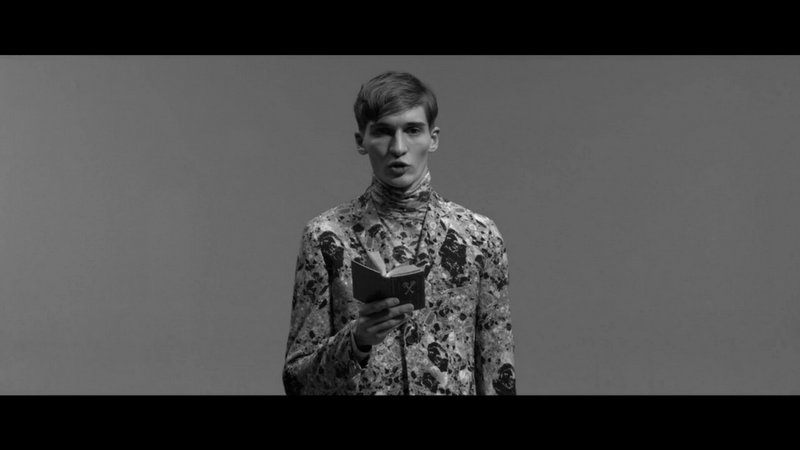


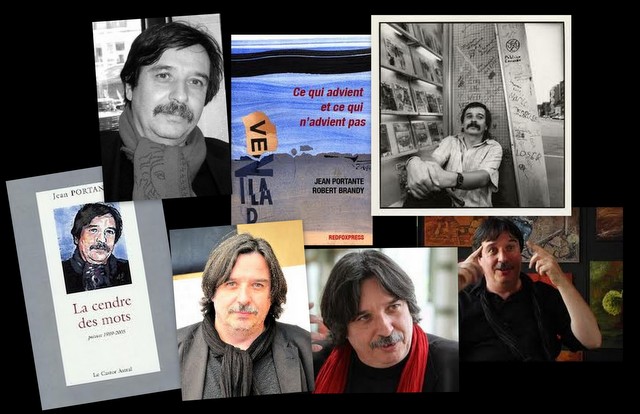








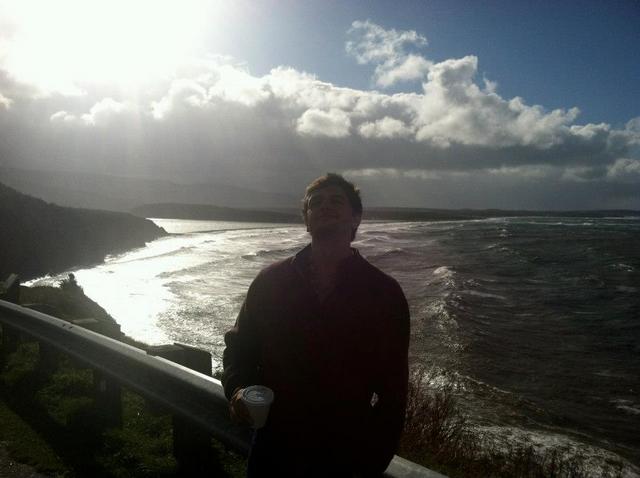
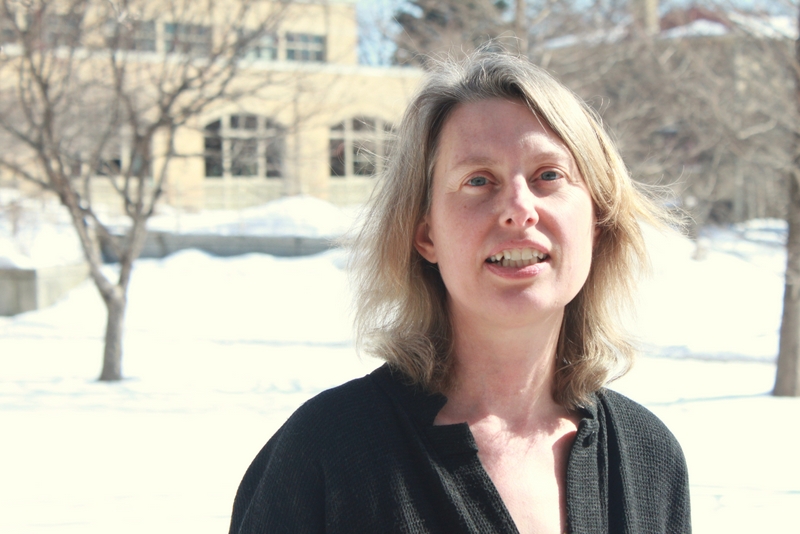
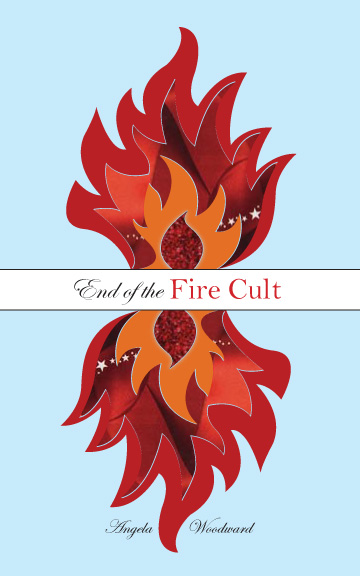



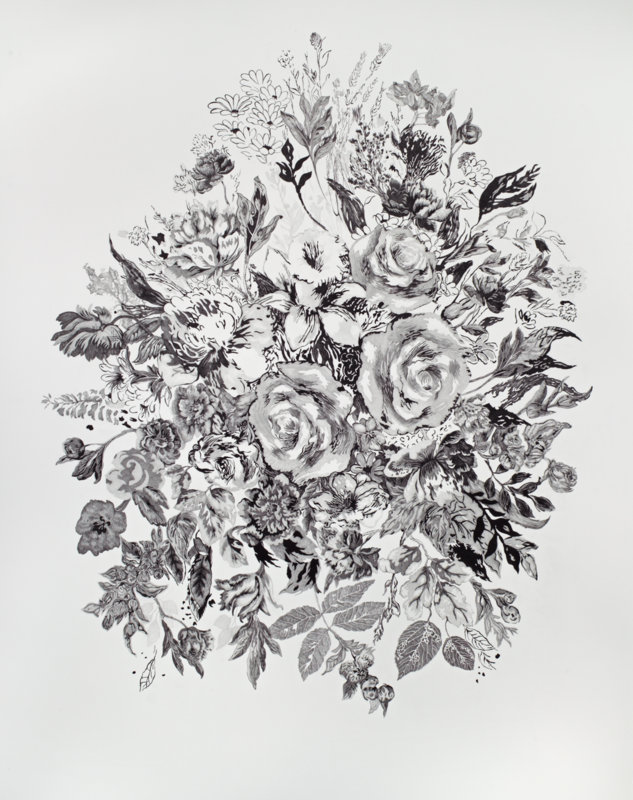

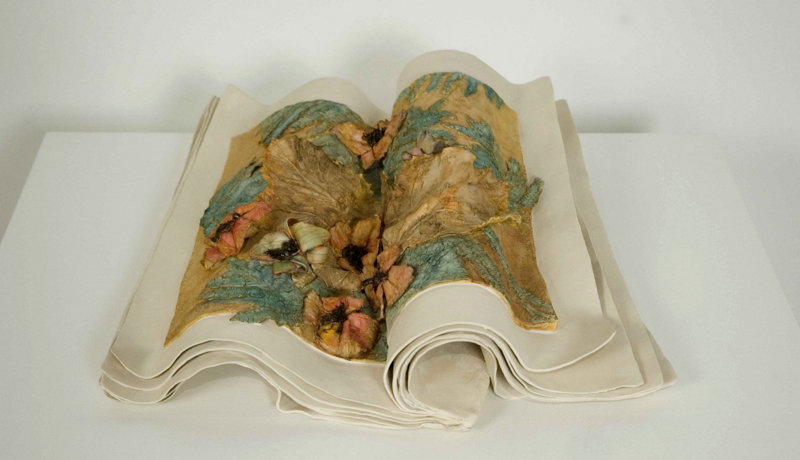


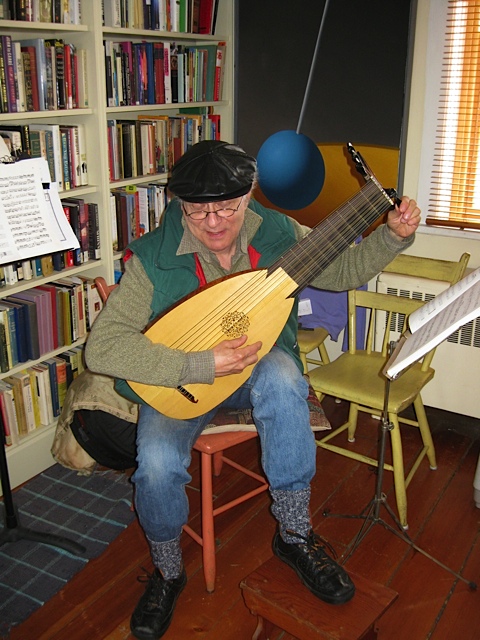
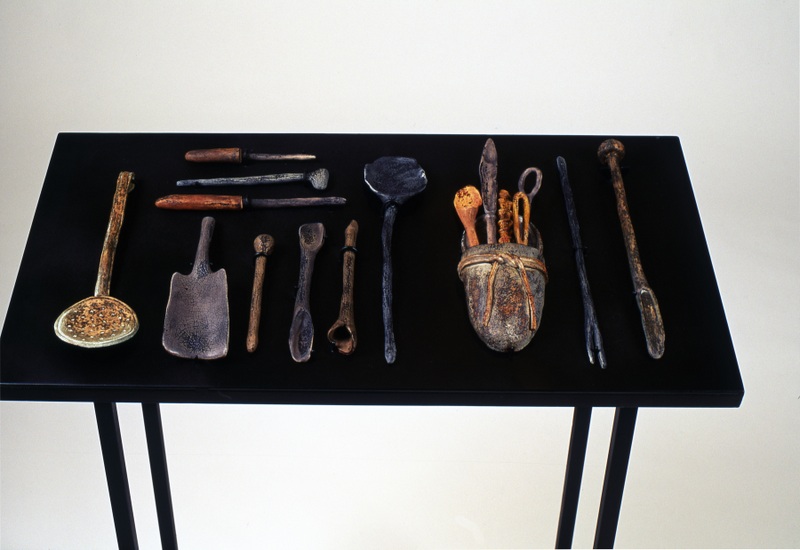




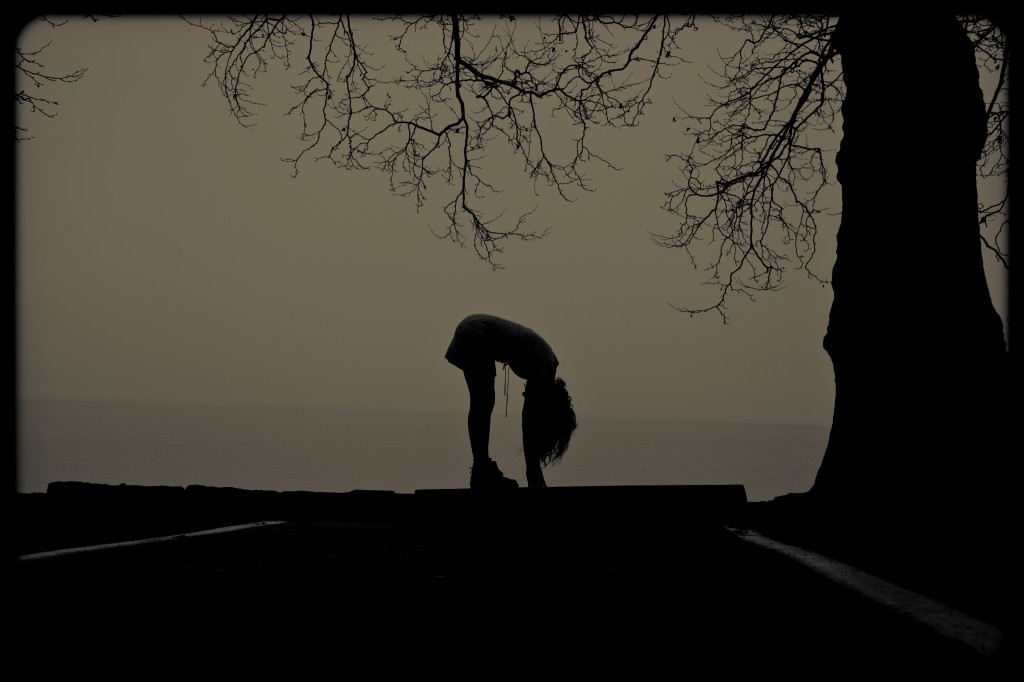
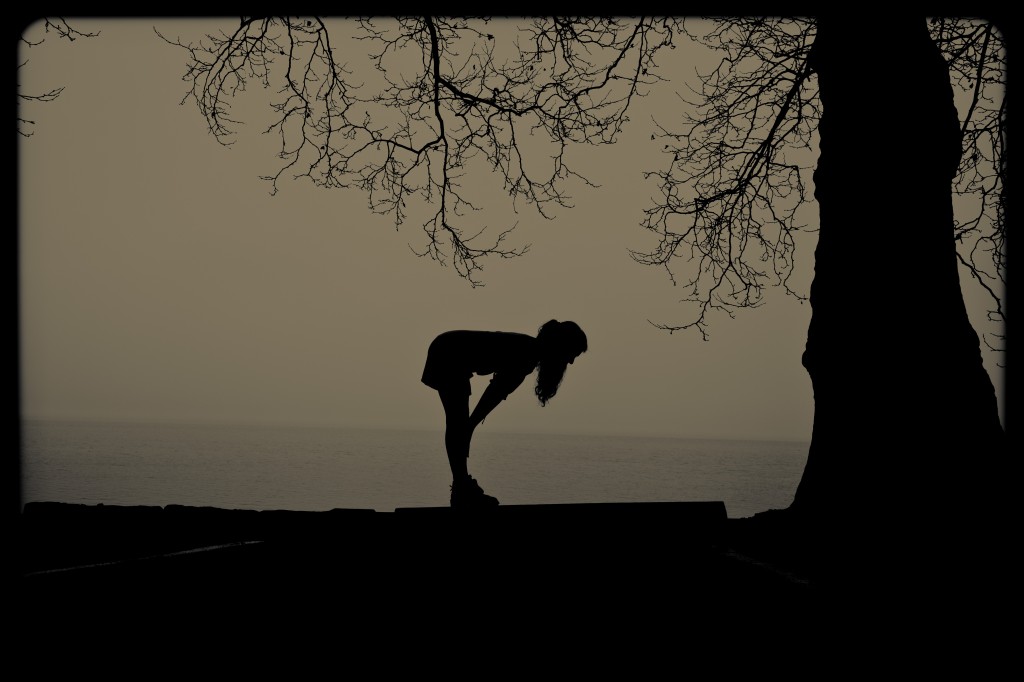






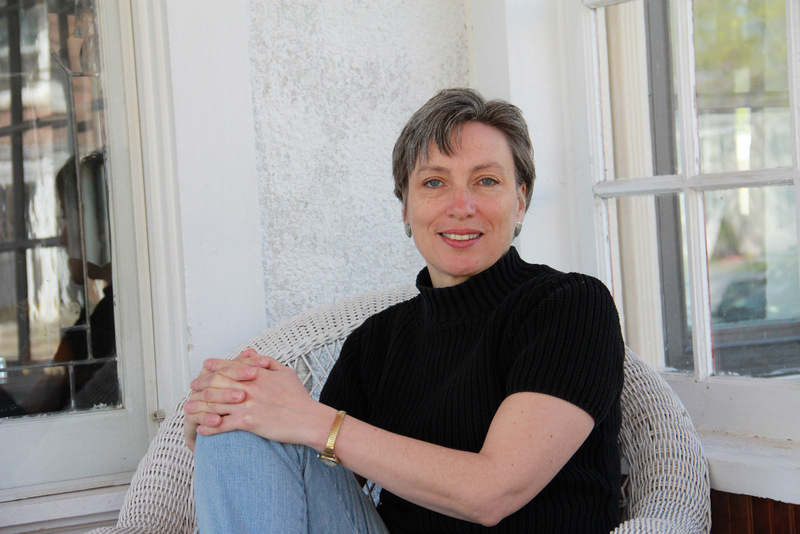
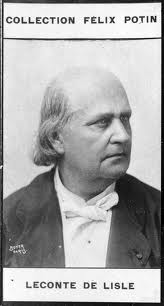


 (Photo: Robert Reynolds)
(Photo: Robert Reynolds)







